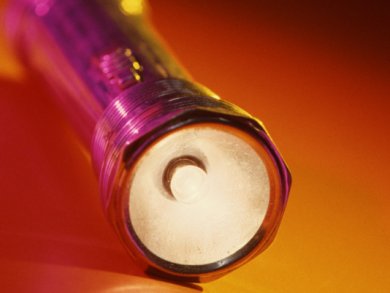Rechargable Medical Implants
Pacemakers and other implanted medical devices require electric current to operate. Changing the battery requires an additional operation, which is an added stress on the patient. A Japanese team led by Eijiro Miyako at the National Institute of Advanced Industrial Science and Technology has now introduced an alternative approach in the journal Angewandte Chemie: an implantable converter that can simply be irradiated with laser light through the skin.
Bioelectronic devices help many patients to live longer and to experience a better quality of life. Pacemakers are not the only electronic implants used today; there are also “pain pacemakers” that alleviate severe chronic pain. These are neurostimulators that send electrical impulses directly to the spinal cord to block the signal pathway that transmits pain to the brain. Another example is the implantable drug pump, which can direct painkillers near the spinal cord or provide insulin for diabetics.
Such electronic implants are usually powered by lithium batteries that last at most ten years. The battery must then be changed in another operation. A rechargeable version is thus desirable. Various alternatives are currently available, such as electric cells that are driven by glucose within the body, or muscle-driven dynamos. The disadvantage is that the production of current cannot be controlled. Other approaches operate through electromagnetic current generation, but this can disrupt electronic devices in the vicinity.
Recharging with Light
The Japanese team has now developed an interesting alternative, a device that delivers current upon irradiation with a laser. At the heart of the system are very finely divided carbon nanotubes embedded in a silicon matrix. These absorb laser light and convert the light energy very effectively to heat. This heat energy is in turn converted into electric current by the tiny device. This works through the Seebeck effect: in an electrical circuit made of two different conductors—in this case a special arrangement of semiconductor materials—a temperature difference between the contacts results in a small voltage. Only the side of the device coated with the silicon/carbon nanotube composite that gets irradiated heats up, which provides the required temperature difference. Because the carbon nanotubes absorb very well in a range of wavelengths that can pass through tissue, the device, which need be no larger than a half-centimeter cube, can be implanted under the skin. Simple irradiation should then allow it to generate enough voltage to charge the battery of a pacemaker or other device.
The researchers are now working on making the energy conversion of the device even more efficient and to increase its safety for medical applications.
- A Photo-Thermal-Electrical Converter Based On Carbon Nanotubes for Bioelectronic Applications
E. Miyako, C. Hosokawa, M. Kojima, M. Yudasaka, R. Funahashi, I. Oishi, Y. Hagihara, M. Shichiri, M. Takashima, K. Nishio, Y. Yoshida,
Angew. Chem. Int. Ed. 2011.
DOI: 10.1002/anie.201106136




